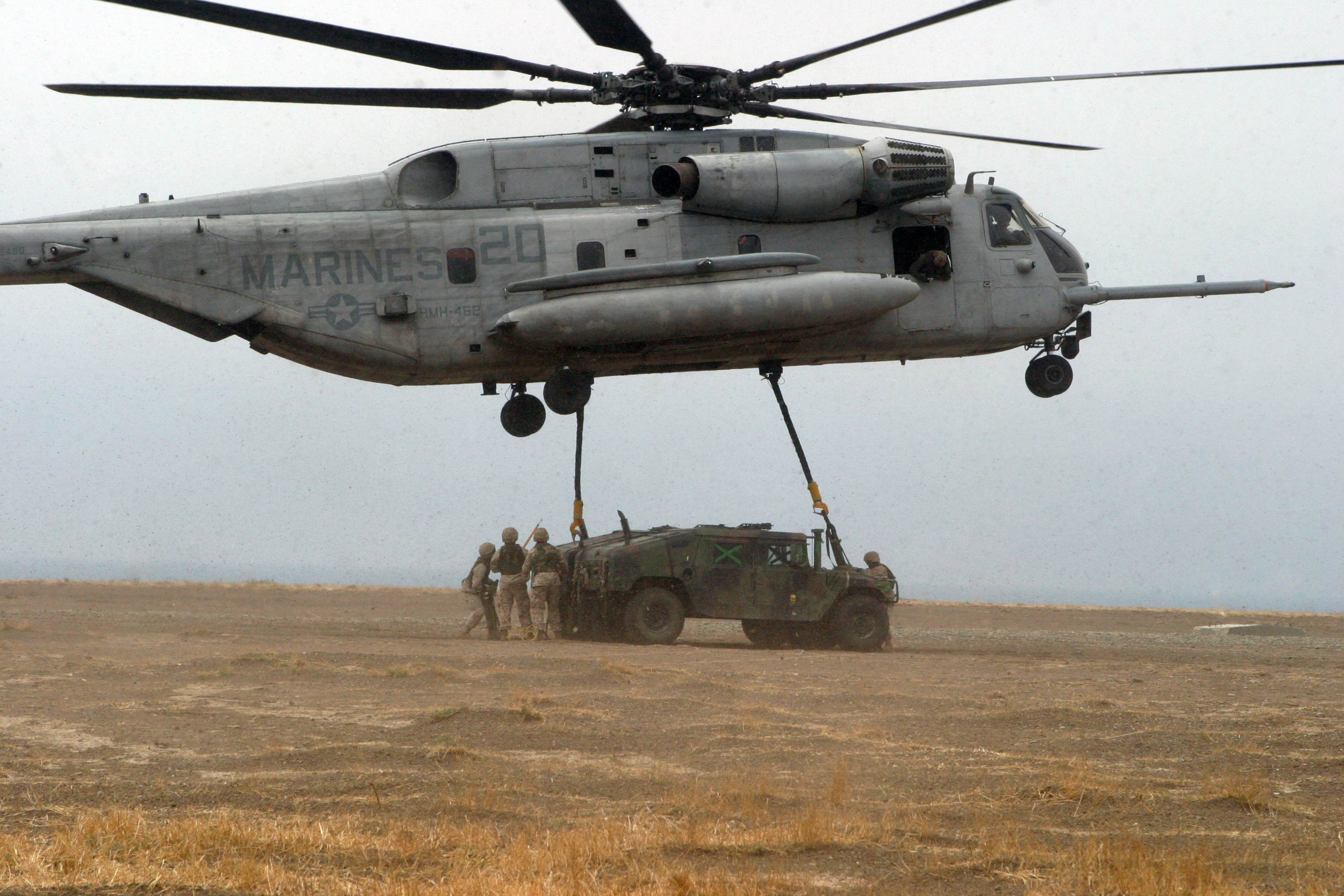The Sikorsky CH-53 Super Stallion heavy-lift helicopter first flew in 1974 and entered service with the US Marine Corps (USMC) in 1981. A total of 172 Super Stallions have been delivered and 165 are in service with marine corps squadrons in the Pacific Fleet and in the Atlantic Fleet. The helicopter is also in service with the marine corps reserve, training and experimental squadrons. The final Super Stallion for the USMC was delivered in November 2003.
The marine corps uses the Super Stallion in the amphibious assault role and for transporting heavy equipment. The US Navy also use the Super Stallion for vertical delivery and recovery of damaged aircraft on aircraft carriers.
In 2000, the USMC announced the CH-53X programme to upgrade the CH-53E and extend its service life to 2025. Upgrades would include a new engine, substantially increased payload capacity, all-composite rotor, elastomeric rotor head and glass cockpit with fly-by-wire controls.
In March 2004, a USMC analysis of alternatives (AoA) determined that a new-build airframe would be a more cost-effective solution. Sikorsky was awarded an initial system development and demonstration (SDD) contract for the new helicopter, which is designated CH-53K heavy-lift rotorcraft (HLR), in January 2006 and the full SDD contract in April 2006. The GE38-1B engine was selected to power the CH-53K in December 2006. Requirement is for 156 helicopters and service entry is planned for 2015.
The fuselage is watertight and of light alloy, steel and titanium construction. The cockpit includes glass fibre and epoxy materials.
The seven-bladed main rotor is fitted with a Sikorsky blade inspection system. The main rotor blades are of Nomex honeycomb construction with a titanium spar and a composite glass fibre and epoxy skin. The rotor head is primarily titanium and steel.
The Super Stallion is equipped with an ATK AN/AAR-47 missile warning system and chaff and flare dispensers.
An initial six CH-53 helicopters of the German Armed Forces are fitted with the EADS AN/AAR-60 MILDS missile warning system, also fitted on the NH90 and Tiger helicopters.
In June 2007, Northrop Grumman was awarded a contract to equip the USMC CH-53E helicopters with the directional infrared countermeasures system (DIRCM).he only original armament on a CH-53E was two 0.50-calibre machine guns mounted in the windows on the sides of the helicopter. These could only cover the front and most of the sides, leaving the rear exposed.A ramp-mounted weapon system (RMWS) has been developed and evaluated by the US Marine Corps. The M3M RMWS is a Fabrique Nationale Herstal GAU-21 0.50-calibre reduced-recoil machine gun soft-mounted on the ramp, which can be removed and installed in less than two minutes. The M3M has a rate of fire of 1,100 rounds a minute. The US Navy helicopters will be fitted with the GAU-21 machine gun by 2011.


0 σχόλια:
Post a Comment